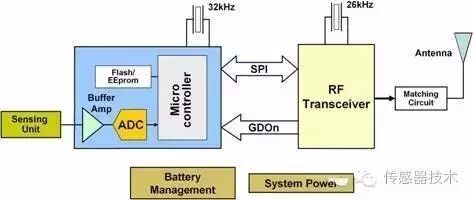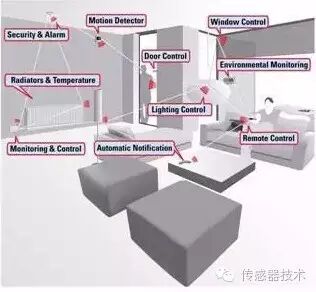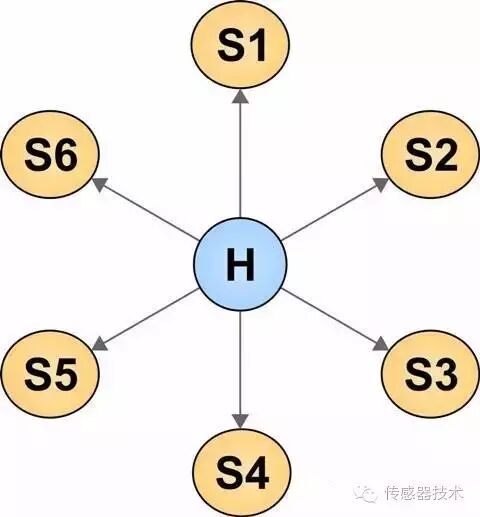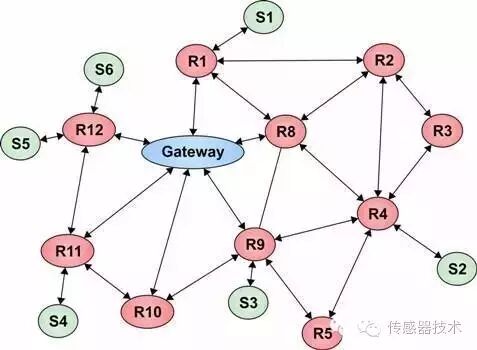
In recent years, the explosive development of wireless technology has given rise to various industrial, scientific, and medical (ISM) band wireless standards. With these new standards, various wireless applications have permeated every aspect of our daily lives. Undoubtedly, Wireless Sensor Networks (WSN) are one of the most significant applications benefiting from these standards.
Imagine a farmer in the American Midwest facing the challenge of how to monitor the body temperature of thousands of cattle daily to prevent animal diseases that threaten the survival of their herd, such as foot-and-mouth disease. By utilizing wireless technology, installing a temperature sensor with a wireless transmitter on each cow to transmit its temperature readings to a main terminal can easily overcome these challenges. This is a simple example of a WSN, demonstrating that the use of wireless technology can save a significant amount of time and cost. This article will briefly introduce the ISM band and WSN, as well as some wireless standards that support them.
Overview of Industrial, Scientific, and Medical Bands
The ISM band is a part of the spectrum that can be used without authorization by anyone. The only requirement for developing products in the ISM band is to comply with certain regulations pertaining to this part of the spectrum. These regulations vary by country. In the United States, the Federal Communications Commission (FCC) is responsible for establishing these regulations, while in Europe, the European Telecommunications Standards Institute (ETSI) is the regulatory body. The FCC’s Part 15 regulations outline the frequency band requirements in the U.S. Figure 1 illustrates various frequencies and bands, along with their corresponding regulatory bodies.

Figure 1 Different wireless standards operating in the ISM band
The 2.4 GHz band and several bands below 1 GHz are the most widely used ISM frequency spaces today. Due to the congestion in the 2.4 GHz band, some product development activities are shifting to the 5 GHz band; however, this trend remains very limited due to effective communication distance issues. The 2.4 GHz band is a general-purpose band, while the sub-1 GHz bands allocated for low-power wireless applications vary by country. In the U.S., the most common remaining band is 902-928 MHz, while in Europe, most wireless communication activities are concentrated in the 868 MHz frequency range.
When interoperability with other systems and operation in different geographical spaces is a critical issue, we recommend using the 2.4 GHz band. The main disadvantage of using the 2.4 GHz band is its crowded space and the limited communication distance due to the poor transmission characteristics of the 2.4 GHz frequency.
Choosing to design products in the sub-1 GHz band helps address some of the issues faced in the 2.4 GHz band; however, the sub-1 GHz band also has its own limitations:
a. Limited duty cycle
b. Inability to achieve interoperability with other systems
c. Geographical operational limitations (e.g., wireless instruments designed for the U.S. 902-928 MHz band may not work properly in Europe.)
Based on different frequencies, target data rates, distances, and ideal levels of interoperability, several new standards have emerged operating in the ISM frequency space. Figure 1 shows some of the most commonly used standards by wireless engineers during product development.
Overview of Wireless Sensor Networks
It is clear that “smart” environments represent the next evolutionary stage in buildings, utilities, industry, homes, transportation, and agriculture. Consequently, interest in WSN is steadily increasing. A WSN consists of many sensors distributed over a geographical area.

Figure 2 A general structure diagram of a WSN node
A WSN typically includes a host or “gateway” that communicates with a large number of wireless sensors via a radio communication link. Data collection is performed at the wireless sensor nodes, which are compressed and directly transmitted to the gateway, or, if required, can be relayed to the gateway through other wireless sensor nodes. The gateway then ensures that the data is the input data for the system.
Each wireless sensor is considered a node, possessing wireless communication capabilities, along with some signal processing and network data intelligence. Depending on the type of application, each node can have a designated address. Figure 2 shows a general structure diagram of a node. It typically includes a sensing device, a data processing microcontroller, and a wireless connection RF module. Depending on the network definition, the RF module can function as a simple transmitter or transceiver (TX/RX). When designing nodes, attention to current consumption and processing capability is very important. The memory of the microcontroller heavily depends on the software stack used.

Figure 3 A WSN used in a home environment
Figure 3 shows a WSN applied in a home environment. In this network, we can observe different types of sensors, such as motion detectors, heaters, temperature monitors, etc.
WSN targets four main objectives:
-
Read certain parameter values at a given location and send them to the main processing center. In agricultural applications, for example, monitoring the body temperature of each cow can help determine which cow needs closer monitoring.
-
Monitor the occurrence of certain events, such as monitoring blood pressure, pulse, and heart rate peaks in medical applications.
-
Track the movement of specific objects, widely used in military fields to track enemy vehicles.
-
Assist in classifying detected objects, especially in traffic control application environments.
Two main topologies used in WSN:

Figure 4 Star network topology for WSN applications
A) Star Network: As shown in Figure 4, a star network consists of a point-to-multipoint wireless connection, where a single host connects to several nodes in a bidirectional or unidirectional manner. If low power and low software overhead are critical parameters, this topology is worth considering. Its limitation is effective communication distance, as each node must be within the communication range of the host. Several standards can be used to implement this topology. Bluetooth®, IEEE 802.15.4, or proprietary systems are some of the most widely used standards. Note that due to some limitations of Bluetooth protocols, the Bluetooth platform has not gained widespread acceptance.
B) Mesh Network: In a mesh network topology, as shown in Figure 5, nodes are interconnected with many redundancies. If one node fails, there are many other ways for two nodes to communicate. This topology has better reliability but comes at a significant cost in terms of current consumption and software overhead. This topology can be implemented through ownership or Zigbee® standards.

Figure 4 Star network topology for WSN applications
Conclusion
Undoubtedly, WSN is evolving every day, and new standards are emerging. However, it is important to note that most of these standards have not yet reached maturity. Instead, they are still in their infancy. A diligent WSN design engineer will thoroughly investigate the network requirements in terms of architecture and specific standard capabilities to meet critical requirements such as current consumption, maximum allowable node count, battery life, data rate, and operating frequency. These important factors guide our choice of a particular standard.
